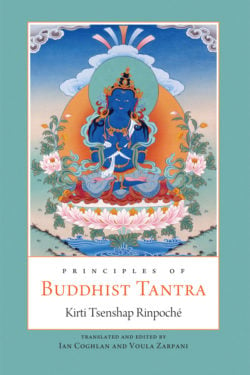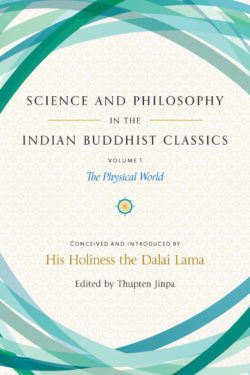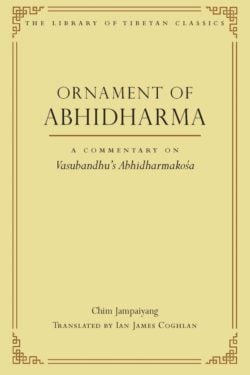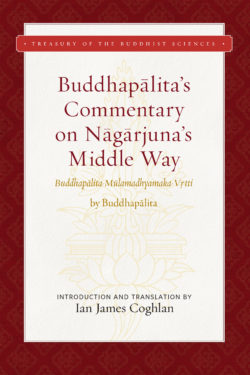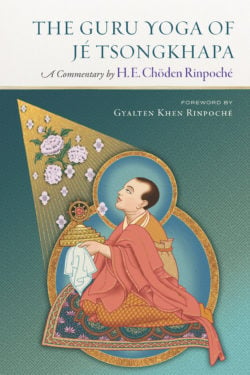Ian Coghlan

Ian Coghlan (Jampa Ignyen) was a monk in the Tibetan Buddhist tradition for twenty years and completed his geshe studies at Sera Je Monastery in 1995. He holds a PhD in Asian studies from La Trobe University and is currently a translator for the Institute of Tibetan Classics and an adjunct research fellow at Monash Asia Institute, Melbourne.
Books, Courses & Podcasts
Principles of Buddhist Tantra
Kirti Tsenshap Rinpoche was a renowned teacher of Tibetan Buddhism with students worldwide. Revered as a teacher by even the Dalai Lama, he was known especially as a master of Buddhist tantra, the powerful esoteric methods for attaining enlightenment swiftly. The teachings in this book are a singular record of his deep learning in that field. Originally delivered in California to a group of Western students, the teachings comment on a classic introduction to tantra by the nineteenth-century Mongolian lama Chöje Ngawang Palden. The work, Illumination of the Tantric Tradition: The Principles of the Grounds and Paths of the Four Great Secret Classes of Tantra, is a staple even today of the curriculum for training young monastics.
Kirti Tsenshap Rinpoche explains the distinctive features of the four classes of tantra—action tantra, performance tantra, yoga tantra, and highest yoga tantra—by describing the way to progress through the tantric paths and grounds (sa lam). He illuminates key issues in tantric practice that are still a matter for debate within the tradition. Finally, he gives a special treatment of the unique methods of Kalacakra tantra, which is regularly taught around the globe by His Holiness the Dalai Lama.
Science and Philosophy in the Indian Buddhist Classics, Vol. 1
Under the visionary supervision of His Holiness the Dalai Lama, Science and Philosophy in the Indian Buddhist Classics brings together classical Buddhist explorations of the nature of our material world and the human mind and puts them into context for the modern reader. It is the Dalai Lama’s view that the explorations by the great masters of northern India in the first millennium CE still have much that is of interest today, whether we are Buddhist or not.
Volume 1, The Physical World, explores the nature of our material world—from the macroscopic to the microscopic. It begins with an overview of the many frameworks, such as the so-called five aggregates, that Buddhist thinkers have used to examine the nature and scope of reality. Topics include sources of knowledge, the scope of reason, the nature and constituents of the material world, theories of the atom, the nature of time, the formation of the universe, and the evolution of life, including a detailed explanation of the early Buddhist theories on fetal development. The volume even contains a brief presentation on early theories about the structure and function of the brain and the role of microorganisms inside the human body. The book weaves together passages from the works of great Buddhist thinkers such as Asaṅga, Vasubandhu, Nāgārjuna, Dignāga, and Dharmakīrti. Each of the major topics is introduced by Thupten Jinpa, the Dalai Lama’s principal English-language translator and founder of the Institute of Tibetan Classics.
Explore the entire series here.
Ornament of Abhidharma
This work by a scholar of the Kadam school is the most authoritative Tibetan commentary on Vasubandhu’s Treasury of Abhidharma (Abhidharmakośa). In terms of stature and authority, Vasubandhu’s Treasury rivals Buddhaghosa’s contemporaneous Path of Purification and deals with such central themes as the dynamics of emotions and karma, of mental and meditative states; it treats both the cosmos and the life within. Chim Jampaiyang’s exposition of it is the greatest flowering of Abhidharma studies in Tibet. Usually referred to as the Chimzö, it is to this day a key textbook in the great monastic universities. A veritable encyclopedia, it spans all areas of classical Indian Buddhist knowledge and is an indispensable reference for scholars of Buddhism.
The Library of Tibetan Classics is a special series being developed by the Institute of Tibetan Classics to make key classical Tibetan texts part of the global literary and intellectual heritage. Eventually comprising thirty-two large volumes, the collection will contain over two hundred distinct texts by more than a hundred of the best-known Tibetan authors. These texts have been selected in consultation with the preeminent lineage holders of all the schools and other senior Tibetan scholars to represent the Tibetan literary tradition as a whole.
Learn more about the Library of Tibetan Classics
Learn about becoming a benefactor of the Library of Tibetan Classics
Buddhapālita’s Commentary on Nāgārjuna’s Middle Way
This “Buddhapālita” commentary on Nāgārjuna’s famous first-century text Wisdom: Fundamental Middle Way Verses has been considered for over a thousand years by Indian and Tibetan philosophers to be the special key that best unlocks the deep philosophical freedom from confusion and perplexity that the Middle Way (or Centrist) school seeks to provide for its students.
Chandrakīrti (seventh century) defended Buddhapālita’s elegant approach as most effective in opening the Middle Way for the inquiring mind to find the liberating experience of reality. Atisha (eleventh century) brought Buddhapālita’s and Chandrakīrti’s transformative critical method to spread widely in Tibet, and Tsongkhapa (fifteenth century) provided a clarification of this philosophical work that was so rigorous and crystal clear that it opened the minds of Tibetan philosopher scientists of all schools until today.
Ian Coghlan’s masterful translation makes Buddhapālita’s breakthrough elucidation of the Wisdom Verses clearly accessible. The translator’s unique education combines the Indo-Tibetan geshé curriculum with the modern doctoral training that adds comparative text-critical analysis and comparative language research in Sanskrit as well as Tibetan. This intellectual and experiential education enabled him to produce this reliable translation for the philosophical seeker to fully engage with Buddhapālita’s richly transformative, liberating work.
The Guru Yoga of Jé Tsongkhapa
Explore the guru yoga practice of Jé Tsongkhapa with a legendary meditation master.
The Hundreds of Deities of Tuṣita is an inspiring and well-loved guru yoga practice that originated from Jé Tsongkhapa himself and was disseminated by the First Dalai Lama. In this book, Chöden Rinpoché—a celebrated scholar who was chosen as a debate partner for His Holiness the Dalai Lama, as well as an accomplished yogi who spent nineteen years in solitary retreat—offers two different commentaries to guide the reader’s understanding.
Rinpoché’s first commentary is based on the tantric oral tradition as presented by the great lama and scholar Pabongkha Dechen Nyingpo in his own inspired commentary on The Hundreds of Deities of Tuṣita, called A Treasury of Precious Jewels, which is presented here in full. Rinpoché adds clarifying instruction to Jé Pabongkha’s work, bringing out the deeper meaning of the text and revealing how ordinary practitioners may understand and apply Pabongkha’s instruction. The second commentary from Rinpoché is a condensed commentary based on the sūtra tradition. Thus, the reader is treated to two different perspectives of the guru yoga practice of Jé Tsongkhapa.
Previously published as Opening the Door of Blessings, this edition has been revised and updated, and is an essential edition to any practitioner’s library.

